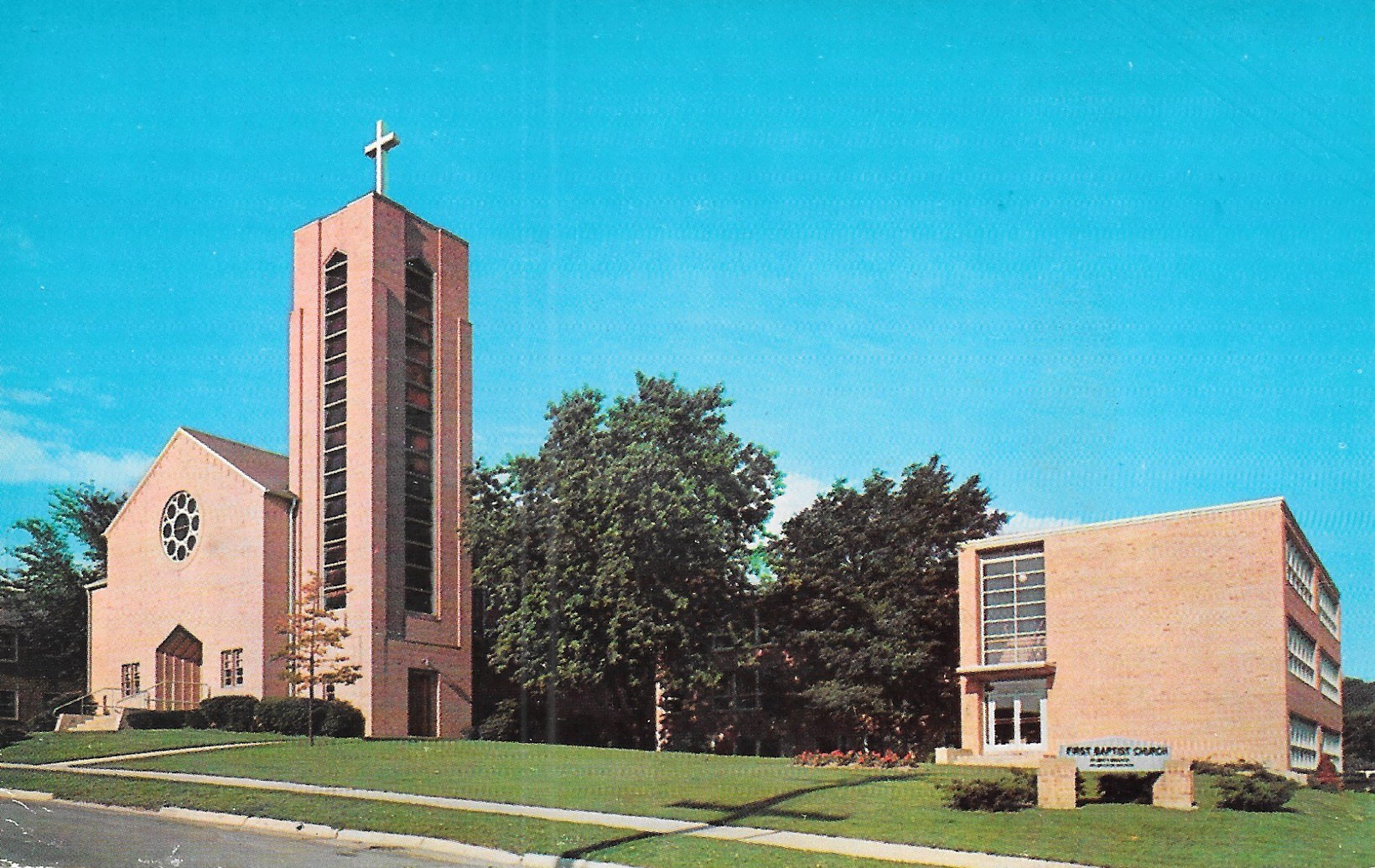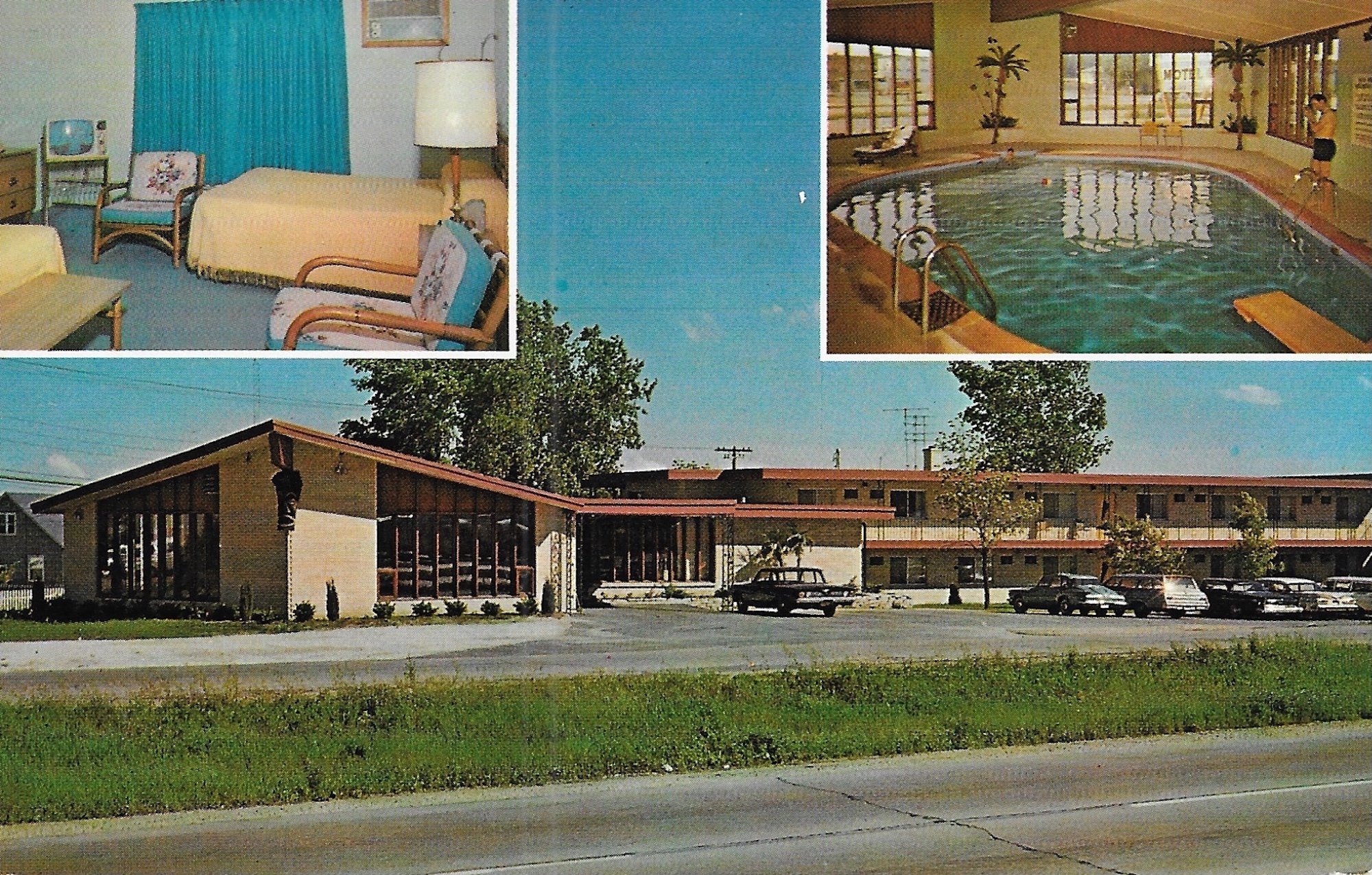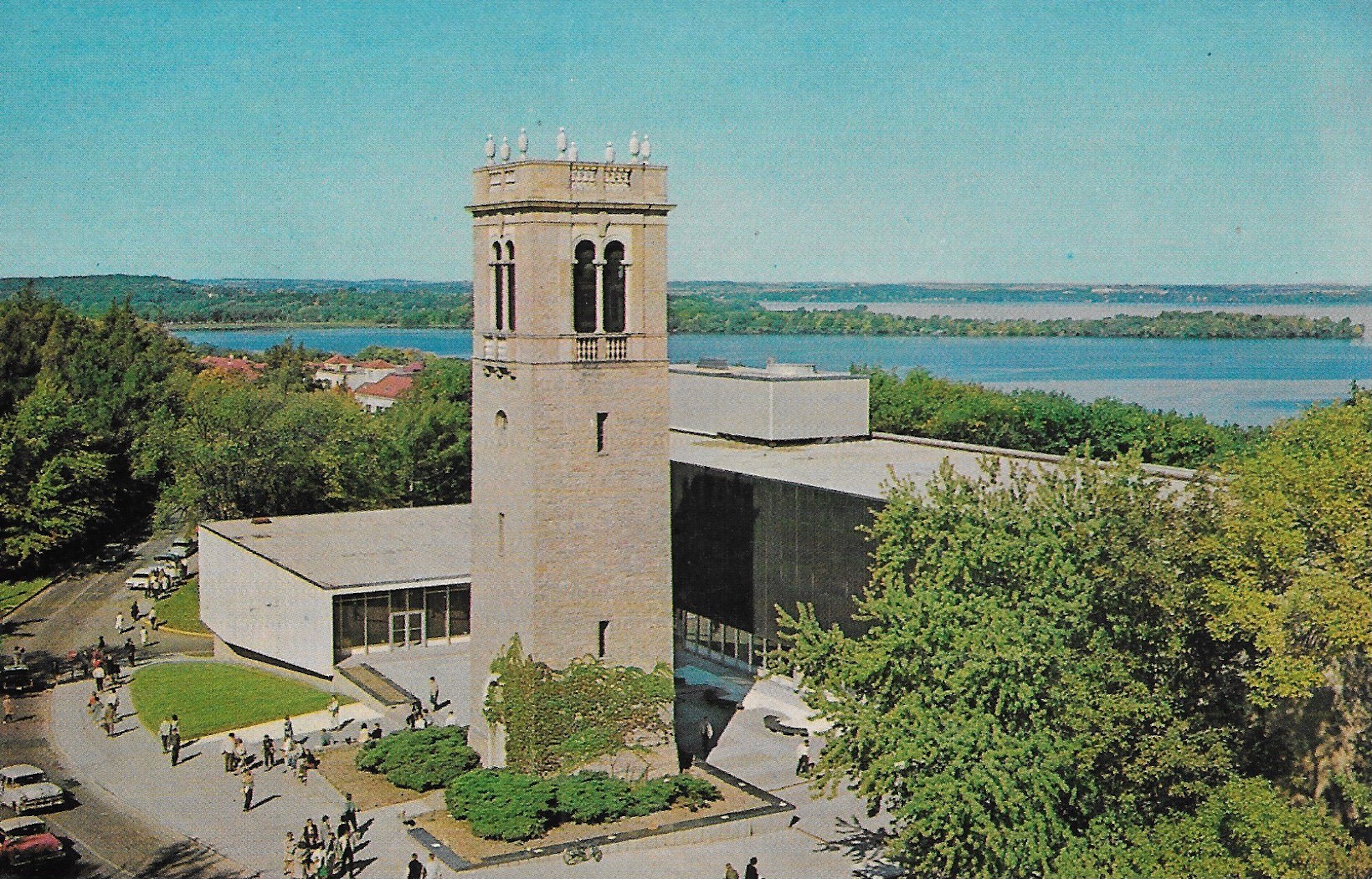Postcard Pairs
by Michael Bridgeman
Buildings change over time. That’s self-evident. It’s also true that there are myriad resources to find out how change comes to the places we build, alter, and (sometimes) demolish. This month I focus on postcards as records of how several buildings have changed. Once ubiquitous, postcards have pretty much been replaced by Instagram, Facebook and the like. There are still lots of older postcards in circulation and they’re generally easy to find in person or online. Though postcards are common, they offer a selective view of the built environment, concentrating heavily on buildings that are either “important” or commercial.
One important building is Bascom Hall, the name given to UW-Madison’s main building in 1920. It was given pride of place on the campus when it opened in 1859. Repeatedly expanded and revised, Main Hall once sported a dome. That changed in October of 1916 when fire consumed the dome, which had been replaced in 1898. Since the dome was never rebuilt, finding before-and-after postcards of Bascom Hall is as easy as “dome” or “no dome.” In this case, postcards only hint at what is a much richer building history.
Some postcards reveal changes that may, at first glance, be less obvious, as with this pair showing First Baptist Church (518 N. Franklin Ave.). The first postcard shows the modernist “Late Gothic Revival” church designed by Allen Strang circa 1950, with a small building to the right. In the second postcard, the auxiliary building, which is partly hidden by trees, has grown to three stories. This new education wing was designed by Weiler & Strang and dedicated in May of 1956.
For decades, free postcards were found in guest rooms and lobbies of just about every hotel and motel. Owners were more than happy to have guests mail a card back home that promoted the location and amenities of the place they spent the night. Consequently, there are lots of postcards for lodging. While they are mostly routine, there are occasional postcard pairs that show interesting changes.
In Madison, the Motel Mayflower (2509 Perry St.) evolved dramatically in the late 1960s. When built in 1951, the Mayflower evoked “colonial” themes with its long, white building, dark green shutters, and traditional decorative touches. With new owners came a new approach, conjuring the spirit of the Pilgrims who landed at Plymouth Rock in 1620. The hotel sprouted a ship’s bow (in unlikely shades of blue and red) for the cocktail lounge. Today, the Mayflower looks neither colonial nor nautical.
Hotels and motels exist in a very competitive environment with new players crowding the field, ever-evolving trends, and changing traveler expectations. All that, and more, can motivate changes to roadside lodging. The Motel Madison (4402 E. Broadway) underwent a subtle, yet telling, change. When built in about 1954, the motel had a conventional ranch-style appearance with horizontal four-pane windows. A later modification, seen in the second card, changed the gabled roof to a sweeping hipped roof that presented a sleeker profile. The color palette looks more 1960s, too. Notice that the sign atop the roof remains the same. The Motel Madison was demolished and replaced by a Days Inn & Suites.
New additions and amenities could be cause for an owner to print new postcards. Such was the case for the Aloha Inn (3177 E. Washington Ave.) which was built as a two-story motor inn, a motel type that emerged in the 1950s. Reading the marketplace, the proprietors added an indoor swimming pool in 1961, seen to the right in the second postcard. Insets show an interior view of the pool as well as a typical room. The Aloha Inn still stands, though the swimming pool addition is now gone.
The most-altered building in Madison may well be the Park Hotel (22 S. Carroll St.) Given its status and location, its changes are well documented in postcards that go back to its opening in 1871. I show just two cards below. The first one dates to about 1910 when the hotel still looked pretty much as it had since it was built, with a mansard roof and two-story veranda. The second card dates to 1963 when a totally new building, called the Park Motor Inn [1], replaced the old hotel which had been remodeled and bore little resemblance to the 1910 photo. Transformations have continued since the ‘60s, with the latest remodeling completed in 2017.
Sometimes a pair of postcards are interesting not for the subject building, but for its surroundings. The Carillon Tower (1150 Observatory Drive) on the UW-Madison campus offers a good example. Designed by state architect Arthur Peabody, was completed in 1936 atop Bascom Hill with the tower surrounded by trees. The setting changed in 1962 when the new Social Science building opened and intruded on Bascom Woods, causing a kerfuffle among some press and faculty. The Social Science building was further expanded to the north (the Lake Mendota side) in 1966. Through it all, the Carillon Tower has maintained its dignified presence.
Picture postcards are interesting—and imperfect—tools for looking at a building’s history. The photos are usually undated and postmarks only tell us when the card was mailed, not printed. To better understand a building’s story, we can look at photos and illustrations, bird’s-eye views and aerial shots, tax records and building permits, newspaper articles and legal notices, and archives and books. No source tells us the whole story. Still, even a simple postcard may help us better understand changes over time.
----
[1] Over the years, the Park Hotel has changed its name about as often as its appearance. It has been known as the Park Hotel, the New Park Hotel, the Park Motor Inn, the Inn on the Park, and (once again) the Park Hotel.
Image Credits
Main Hall with its 1898 dome. No information.
Bascom Hall without a dome. Fagan Publishing, Madison, Wis. Undated.
First Baptist Church, circa 1950. Fagan Publishing, Madison, Wis. Undated.
First Baptist Church, after 1956. William Wollin Studios, Madison, Wis. Undated.
The “colonial” Mayflower, circa 1951. Fagan Publishing, Madison, Wis. Undated.
The “nautical” Mayflower, circa 1970. Fagan Publishing, Madison, Wis. Undated.
Motel Madison, circa 1954. MWM Co., Aurora, Mo. Postmarked 1956.
Motel Madison, date unknown. C.L. Manning, Milwaukee, Wis. After 1963.
Aloha Inn before the pool. Fagan Publishing, Madison, Wis. Undated.
Aloha Inn after 1961. Fagan Publishing, Madison, Wis. Postmarked 1967.
The Park Hotel, circa 1910. No information.
The Park Motor Inn, after 1963. William Wollin Studios, Madison, Wis. Undated.
The Carillon Tower amid trees. Photo by Diemer, Madison, Wis. Undated.
The Carillon Tower after 1962. Fagan Publishing, Madison, Wis. Undated.














